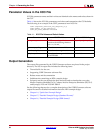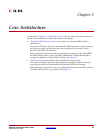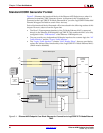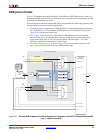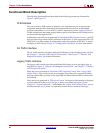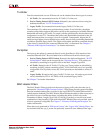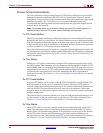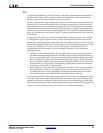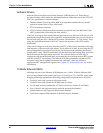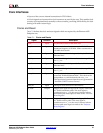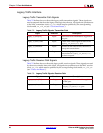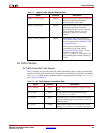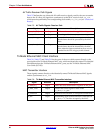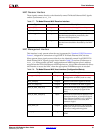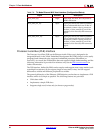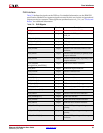
46 www.xilinx.com Ethernet AVB Endpoint User Guide
UG492 July 23, 2010
Chapter 5: Core Architecture
Software Drivers
Software Drivers are delivered with the Ethernet AVB Endpoint core. These drivers
provide functions which utilize the dedicated hardware within the core for the PTP IEEE
P802.1AS specification. Functions include:
• The Best Master Clock Algorithm (BMCA) to determine whether the core should
operate in master clock or slave clock mode
• PTP Clock Master functions
• PTP Clock Slave functions (which accurately synchronize the local Real Time Clock
(RTC) to match that of the network clock master)
If the core is acting as clock master, then the software drivers delivered with the core will
periodically sample the current value of the RTC and transmit this value to every device on
the network using the P802.1 defined PTP packets. The hardware “Tx Time Stamp” logic,
using the mechanism defined in P802.1AS, ensures the accuracy of this RTC sample
mechanism.
If the core is acting as a clock slave, then the local RTC will be closely matched to the value
and frequency of the network clock master. This is achieved, in part, by receiving the PTP
frames transmitted across the network by the clock master (and containing the masters
sampled RTC value). The PTP mechanism will also track the total routing delay across the
network between the clock master and itself. The software drivers use this data, in
conjunction with recent historical data, to calculate the error between its local RTC counter
and that of the RTC clock master. The software will then periodically calculate an RTC
correction value and an updated increment rate, and these values are written to
appropriate RTC configuration registers. See Chapter 13, “Software Drivers” for further
information.
Tri-Mode Ethernet MACs
Although not part of the Ethernet AVB Endpoint core, a Xilinx Tri-Mode Ethernet MAC
core is a requirement of the system (see Figure 5-1 and Figure 5-2). The IEEE Audio Video
Bridging technology stipulates the following configuration requirements on this MAC:
• The MAC must only operate in full-duplex mode
• The MAC must only operate at 100 Mbps and/or 1 Gbps
• VLAN mode must be enabled (the AV traffic will always contain VLAN fields)
• Flow Control is not supported on the network and must be disabled
• Jumbo Frames are not supported and must be disabled
• The built-in Address Filter Module of the MAC must be disabled



